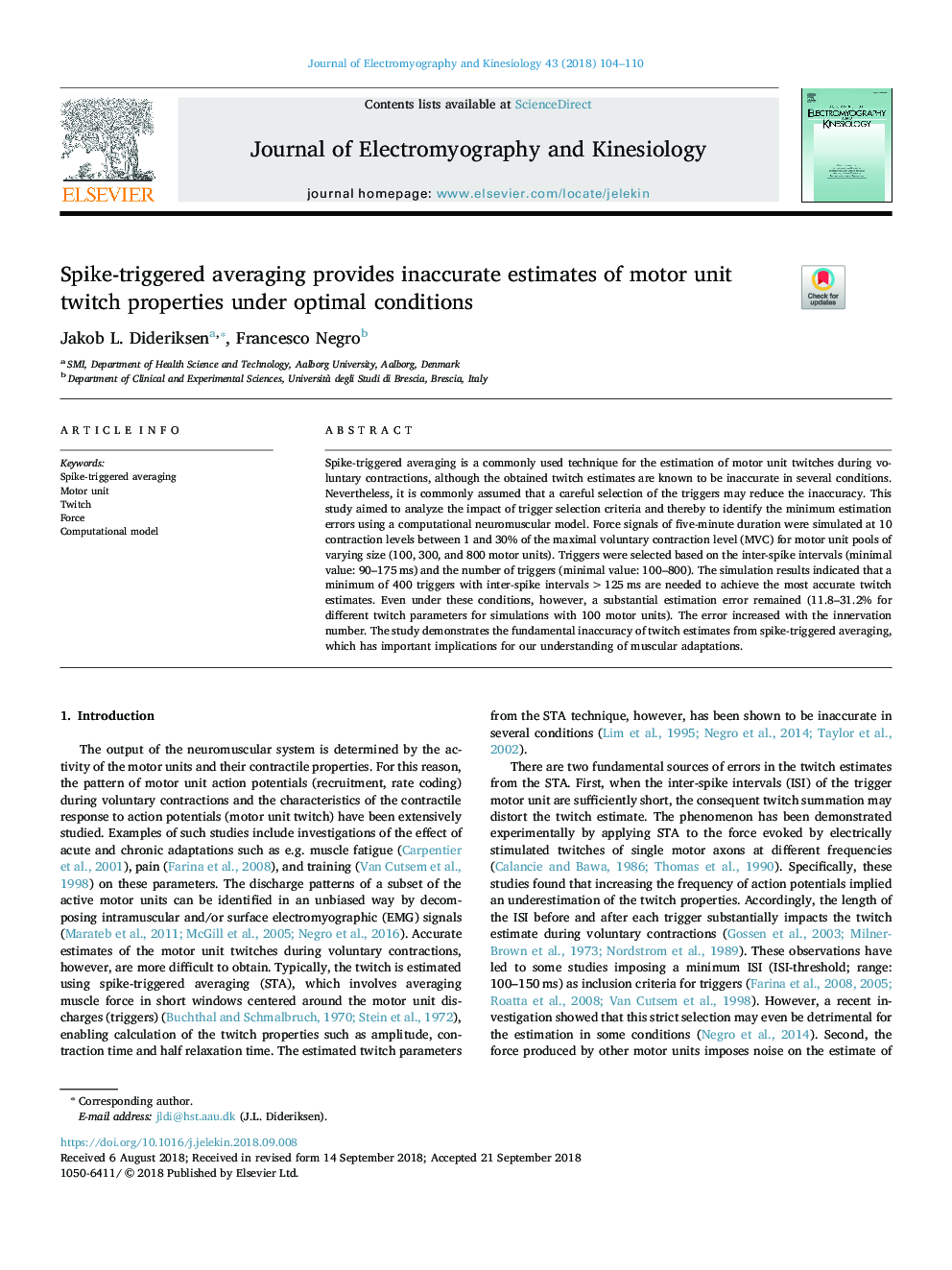| Article ID | Journal | Published Year | Pages | File Type |
|---|---|---|---|---|
| 11032682 | Journal of Electromyography and Kinesiology | 2018 | 7 Pages |
Abstract
Spike-triggered averaging is a commonly used technique for the estimation of motor unit twitches during voluntary contractions, although the obtained twitch estimates are known to be inaccurate in several conditions. Nevertheless, it is commonly assumed that a careful selection of the triggers may reduce the inaccuracy. This study aimed to analyze the impact of trigger selection criteria and thereby to identify the minimum estimation errors using a computational neuromuscular model. Force signals of five-minute duration were simulated at 10 contraction levels between 1 and 30% of the maximal voluntary contraction level (MVC) for motor unit pools of varying size (100, 300, and 800 motor units). Triggers were selected based on the inter-spike intervals (minimal value: 90-175â¯ms) and the number of triggers (minimal value: 100-800). The simulation results indicated that a minimum of 400 triggers with inter-spike intervals >125â¯ms are needed to achieve the most accurate twitch estimates. Even under these conditions, however, a substantial estimation error remained (11.8-31.2% for different twitch parameters for simulations with 100 motor units). The error increased with the innervation number. The study demonstrates the fundamental inaccuracy of twitch estimates from spike-triggered averaging, which has important implications for our understanding of muscular adaptations.
Related Topics
Health Sciences
Medicine and Dentistry
Orthopedics, Sports Medicine and Rehabilitation
Authors
Jakob L. Dideriksen, Francesco Negro,
